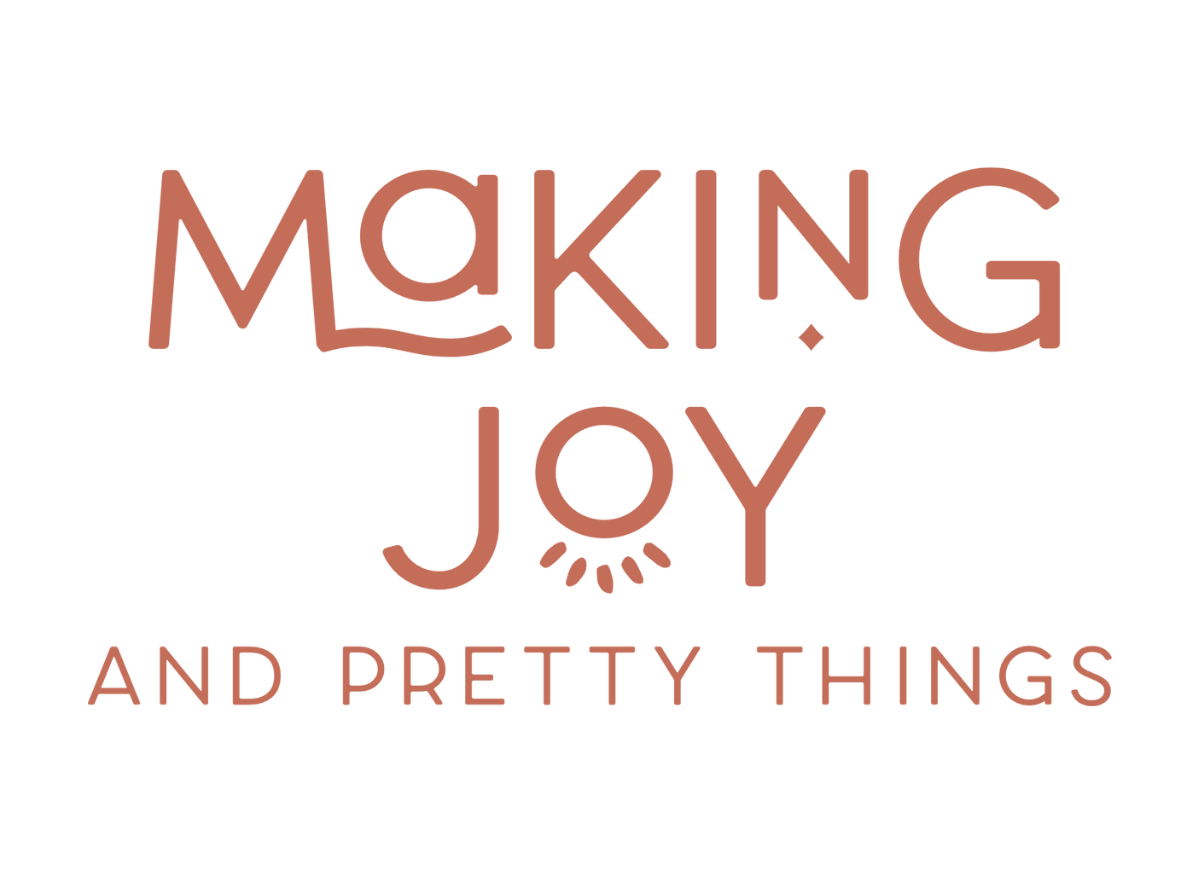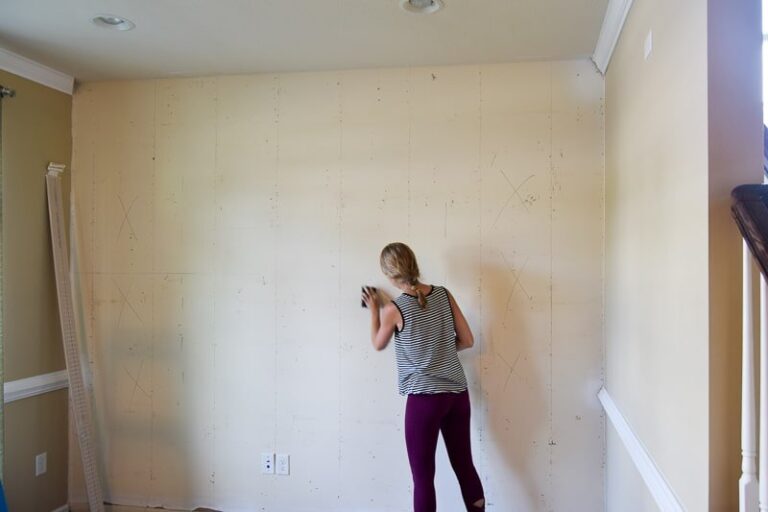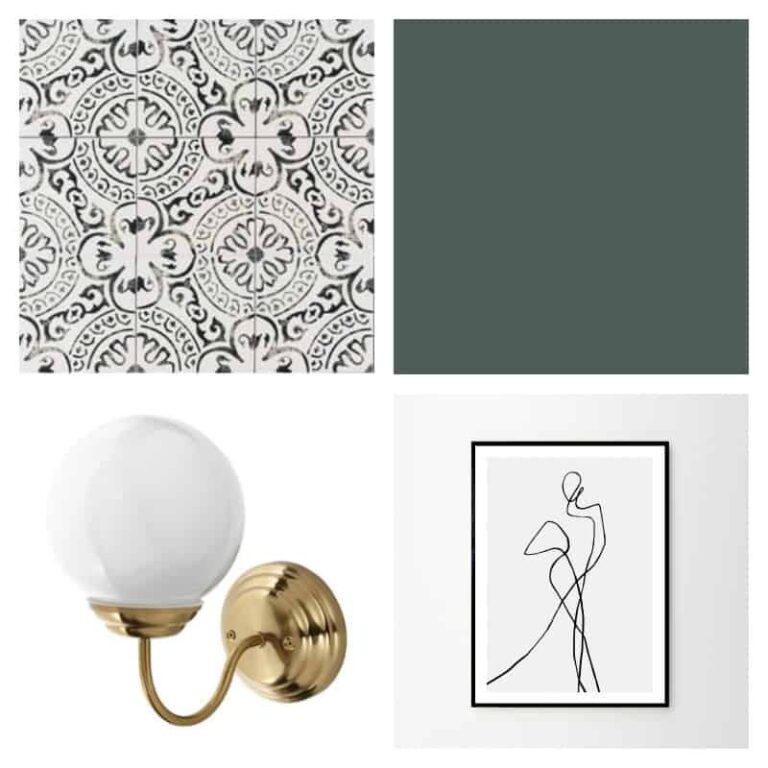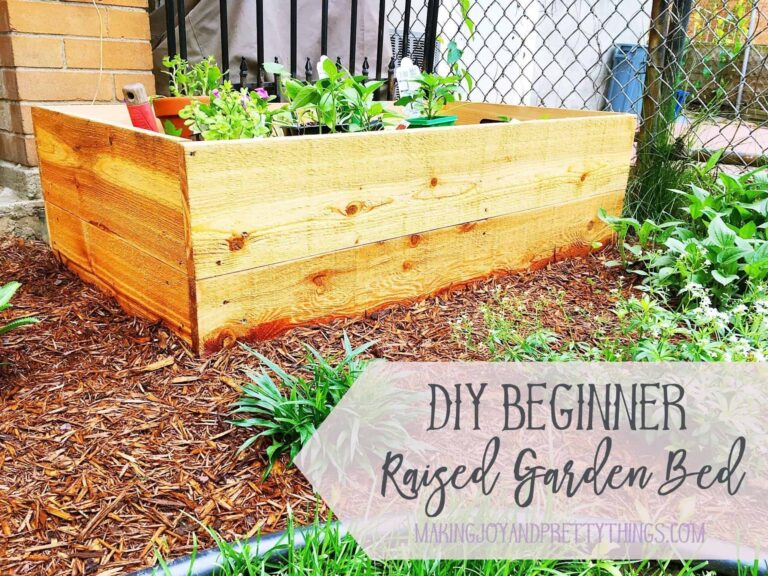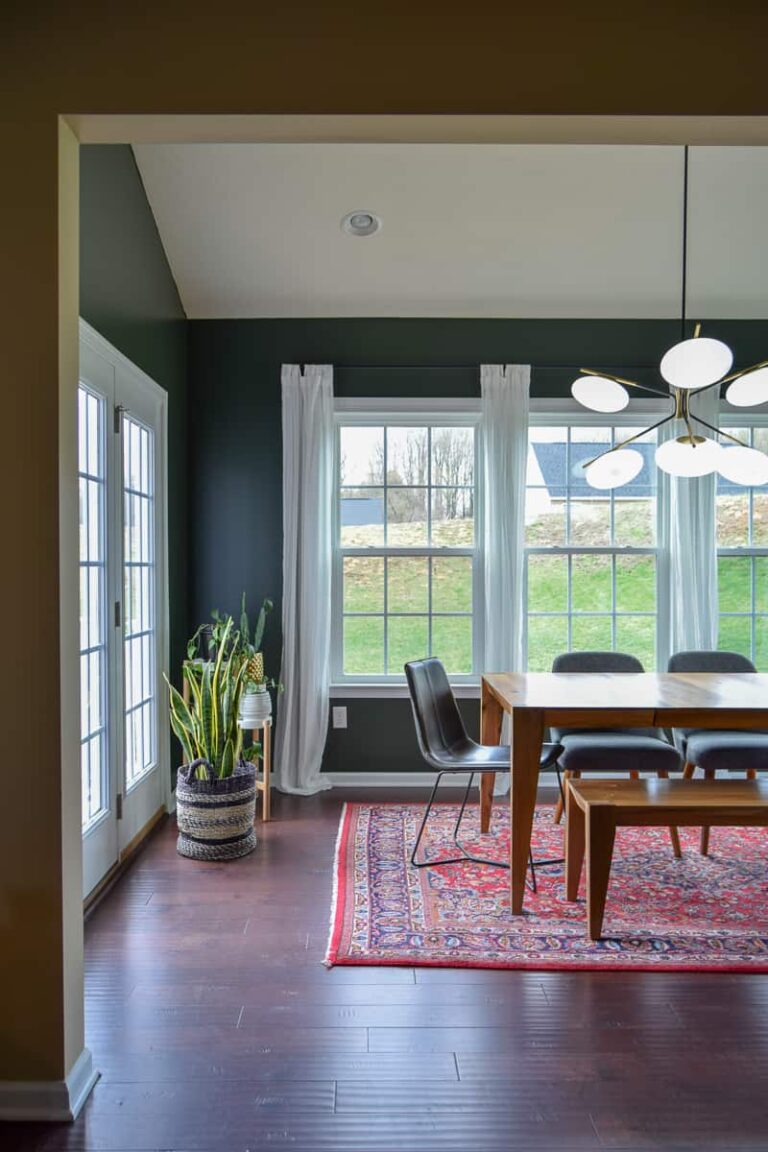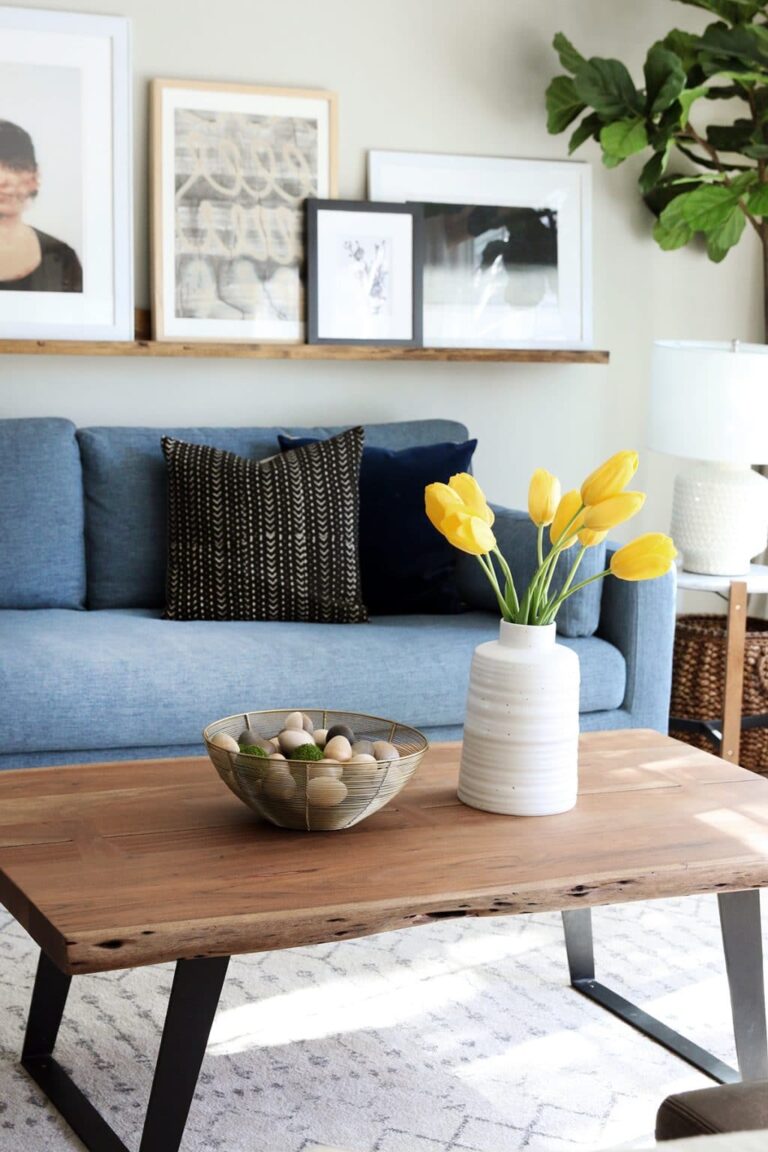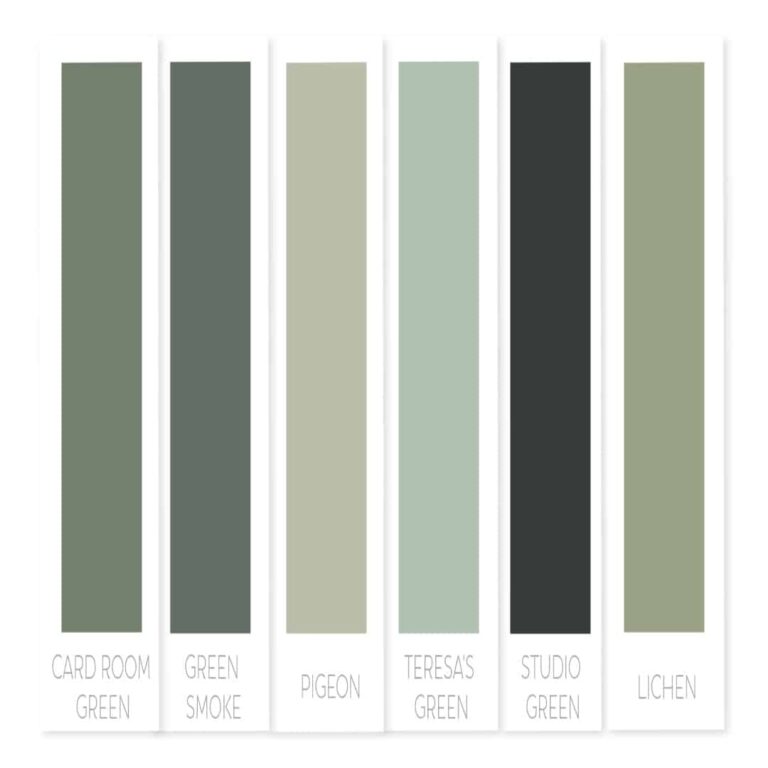Learn How to Decorate with Fake Plants
Fake plants have come a long way from their plastic predecessors. Nowadays, they can effortlessly breathe life into any room, without the need for watering or sunlight. Whether you’re a notorious plant killer or simply looking for low-maintenance décor options, learning how to decorate with fake plants is the perfect solution to adding a little green to your space! In this guide, we’ll explore the art of decorating with fake plants and offer tips on where to find the best ones to suit your style.
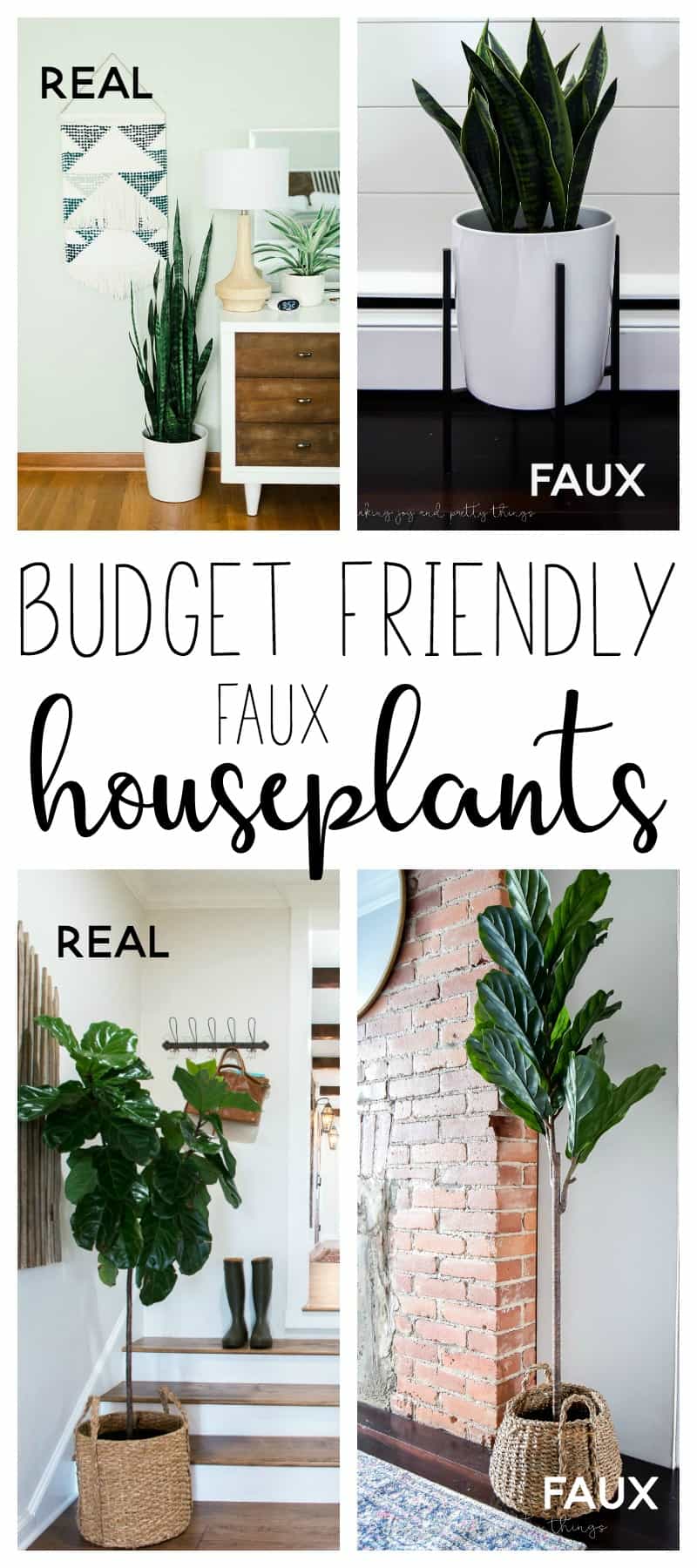
I think it’s no secret now that I’m an aspiring plant lady. There’s one particular little shop in Pittsburgh that I absolutely love. I stop in every few weeks to see what they have and 9 times out of 10 I’m picking up a new plant.
There’s something about faux greenery, the flowing, whimsical leaves, the shape of a cactus, or the shoots of an aloe plant that make my heart content.
As it is now, I keep most plants up on stands or on open shelving, far from the reach of toddler hands. If I didn’t have little kids running around, I’m certain I would have even more plants on the floors in nearly every corner of every room.
I’m not sure what it is exactly about these plants, but I’m a firm believer that every room needs at least one plant. When you have a room and you’re wondering why it doesn’t look complete or wondering if you’re missing something, it’s most likely a plant that’s missing.
Why Choose Fake Plants?
Well, for starters, they’re incredibly low maintenance. No need to worry about watering schedules, indirect or direct sunlight exposure, or soil quality. Fake plants are also ideal for those with allergies or homes with pets, as they don’t shed pollen and use fake soil that might attract curious paws.
Additionally, fake plants offer endless versatility. You can place them in areas where real plants wouldn’t survive, such as dark corners or rooms with inconsistent temperatures. Plus, they’re a one-time investment that can last for years with minimal upkeep, making them a budget-friendly décor option in the long run.
Faux plants are truly the best way to add greenery to your living room, dining room, coffee table, side table, or any other living space. The best part – you can get them at hobby lobby or any inexpensive craft store.
Where to Buy Faux Houseplants
Now that you’re sold on the idea of incorporating fake plants into your home, the next step is finding the perfect ones. Fortunately, there are numerous places to shop for fake plants, both online and in-store.
- Home Décor Stores: Many home décor retailers offer a wide selection of fake plants, ranging from small succulents to large potted trees. Visit stores like IKEA, Target, or HomeGoods to browse their collections and find pieces that complement your style.
- Garden Centers: Believe it or not, garden centers aren’t just for real plants! Some garden centers carry high-quality fake plants that look surprisingly lifelike. Take a trip to your local nursery or garden store to see what they have to offer.
- Online Retailers: The internet is a treasure trove of fake plants waiting to be discovered. Websites like Amazon, Wayfair, and Etsy boast extensive selections of faux foliage in various styles, sizes, and price ranges. Be sure to read customer reviews and check product photos to ensure you’re getting a quality product.
- Specialty Shops: For those looking for more unique or specialty fake plants, consider shopping at niche retailers that focus solely on artificial greenery. These shops often offer premium-quality products that mimic the look and feel of real plants with remarkable accuracy.
Tips for Decorating with Fake Plants
Now that you know where to find fake plants, let’s discuss how to incorporate them into your home décor seamlessly.
Choose High-Quality Plants
Some fake plants have that fake plant look….fake and cheap. Opt for faux house plants that closely resemble their real counterparts in terms of color, texture, and size. Look for ones made with quality materials like silk or high-grade plastic for a more realistic look.
Mix and Match
Create visual interest by mixing different types of fake plants of different heights. Combine tall floor plants with smaller tabletop varieties to add depth and dimension to your space. Consider mixing different shades of green and various leaf shapes and even faux flowers for an organic feel.
Don’t be afraid to mix real and fake plants together for a dynamic and low-maintenance indoor garden. Pairing faux foliage with live plants can help fill in empty spaces and add greenery to areas with less-than-ideal growing conditions.
Placement
Fake plants are perfect in areas where real plants struggle, such as low-light corners or rooms with fluctuating temperatures. Place them strategically to brighten up dark spaces or add a touch of nature to overlooked areas like entryways or bathrooms.
Create a focal point by arranging them on a high shelf, mantels, or side tables to draw attention to specific areas and add a pop of color and texture to your décor. This is a great way to add life to an empty corner or space.
Use Planters and Containers
Don’t limit yourself to traditional pots and planters. Experiment with hanging baskets, wall-mounted planters, terracotta pots, and terrariums to add visual interest to your space. Whether you prefer modern ceramic pots, rustic baskets, or sleek metal containers, the right vessel can enhance the overall look and feel of your artificial plants.
Rotate and Rearrange
Just like with real plants, it’s essential to rotate and rearrange your fake plants occasionally to prevent them from looking stagnant. Experiment with different arrangements and placements to keep your décor fresh and interesting.
Basic Care
While fake plants require less maintenance than real ones, they still accumulate dust over time. Keep them looking fresh by dusting them regularly with a feather duster or cloth to remove dirt and debris.
Adding decorative items like faux moss, rocks, or artificial flowers around the base of the plant will enhance the overall look. You can find these items at a craft store or hardware store. These small details can make your faux foliage appear more lifelike and add a touch of whimsy to your décor.
Different Types of Fake Plants
When it comes to fake plants, there’s a wide variety to choose from, ranging in size, style, and material. Here are some of the most common types of fake plants available:
- Silk Plants: Silk plants are among the most popular types of fake plants due to their realistic appearance and soft texture. Made from silk or polyester fabric, these plants often feature intricate details and vibrant colors that closely mimic real foliage. Silk plants are ideal for adding a touch of elegance to any space.
- Plastic Plants: Plastic plants are durable and long-lasting, making them an excellent choice for high-traffic areas or outdoor use. They’re typically made from polyethylene or PVC and come in a variety of shapes and sizes. While some plastic plants may not look as realistic as silk or other materials, they’re often more affordable and easier to clean.
- Polyurethane (PU) Plants: PU plants are crafted from polyurethane foam, which allows for intricate detailing and lifelike textures. These plants are lightweight and incredibly realistic, making them a popular choice for interior designers and homeowners alike. PU plants are often indistinguishable from real plants and can be found in various styles, including succulents, flowers, and foliage.
- Wax Plants: Wax plants are coated with a thin layer of wax to give them a glossy, lifelike appearance. These plants are often used in candle-making and floral arrangements but can also be found as standalone decorative pieces. Wax plants are low-maintenance and can add a touch of sophistication to any space.
- Fabric Plants: Fabric plants are similar to silk plants but are typically made from other types of fabric, such as cotton or polyester. They offer a softer, more natural-looking alternative to plastic or foam plants and can be easily customized to fit any design aesthetic. Fabric plants are available in a wide range of styles, including flowers, foliage, and trees.
- Mixed Material Plants: Some fake plants combine multiple materials to achieve a more realistic look and feel. For example, a plant might feature silk leaves attached to a foam or plastic stem for added durability and authenticity. Mixed material plants offer the best of both worlds and are often indistinguishable from real plants.
While I’m excited that I have graduated from black thumb to maybe-sorta-kinda-green thumb, there are still places in my house that get zero light. And, there are still some plants that need a lot of attention that I’m not willing to try out just yet.
If you’re still a black thumb and not ready to take on real plants, there is nothing wrong with going faux! But, just in case, I wanted to share my two favorite faux houseplants that are thriving in our home. They’re extremely budget friendly while also looking surprisingly real.
Fiddle Leaf Fig Tree
If you’re a blogger or interior designer or decorator chances are you have a fiddle leaf fig tree in your home or have used one in a design. They are so popular right now and for good reason! They come in all shapes and sizes from little bushes to tall trees. I love the large, waxy leaves especially.
But, don’t take my word for it! Check out the fiddle leaf fig tree in these rooms and imagine what they would look like without the tree.
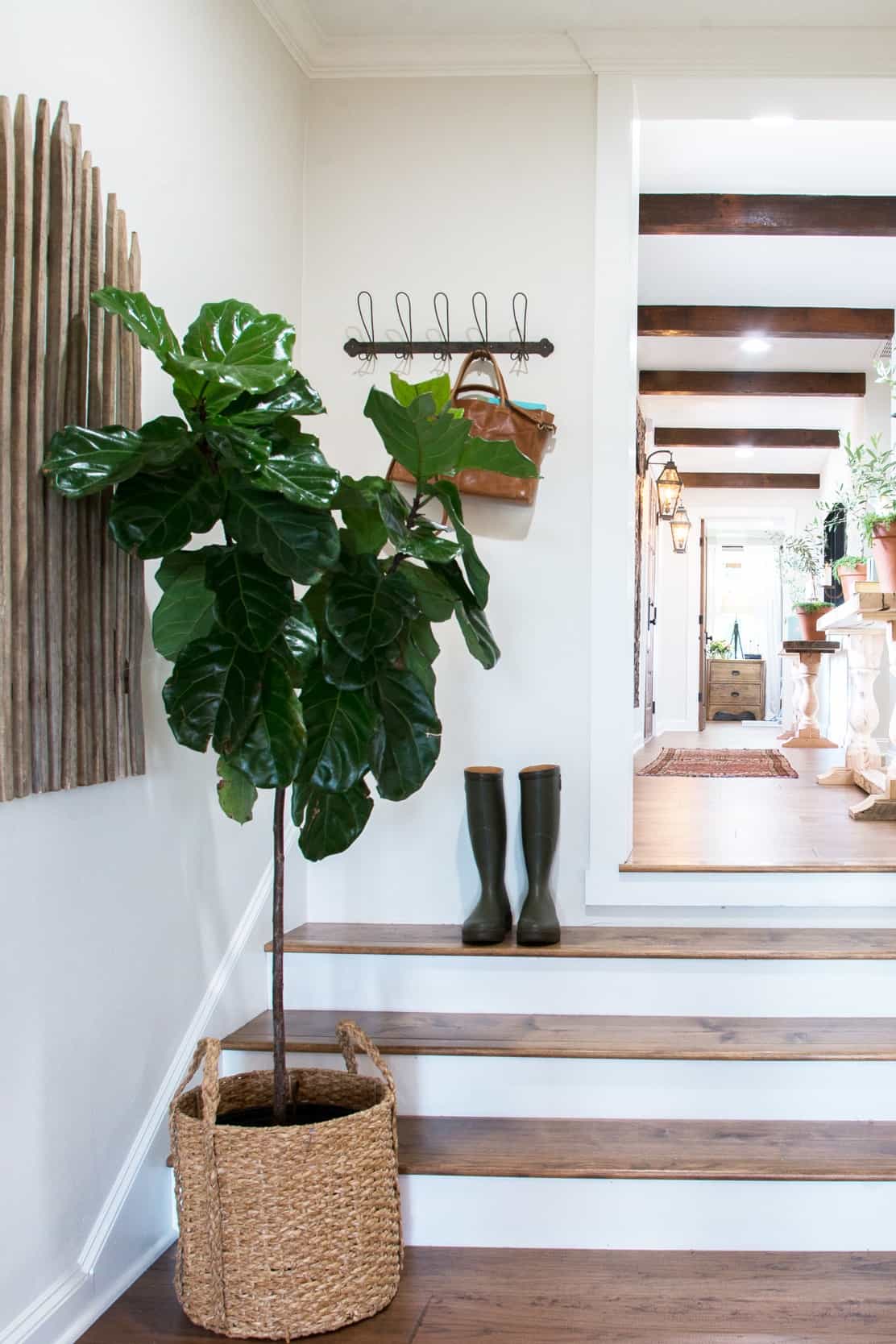
Joanna Gaines is always using plants on Fixer Upper, fiddle leaf fig tree included! This one looks so nice in the pretty basket and breaks up the otherwise neutral space.
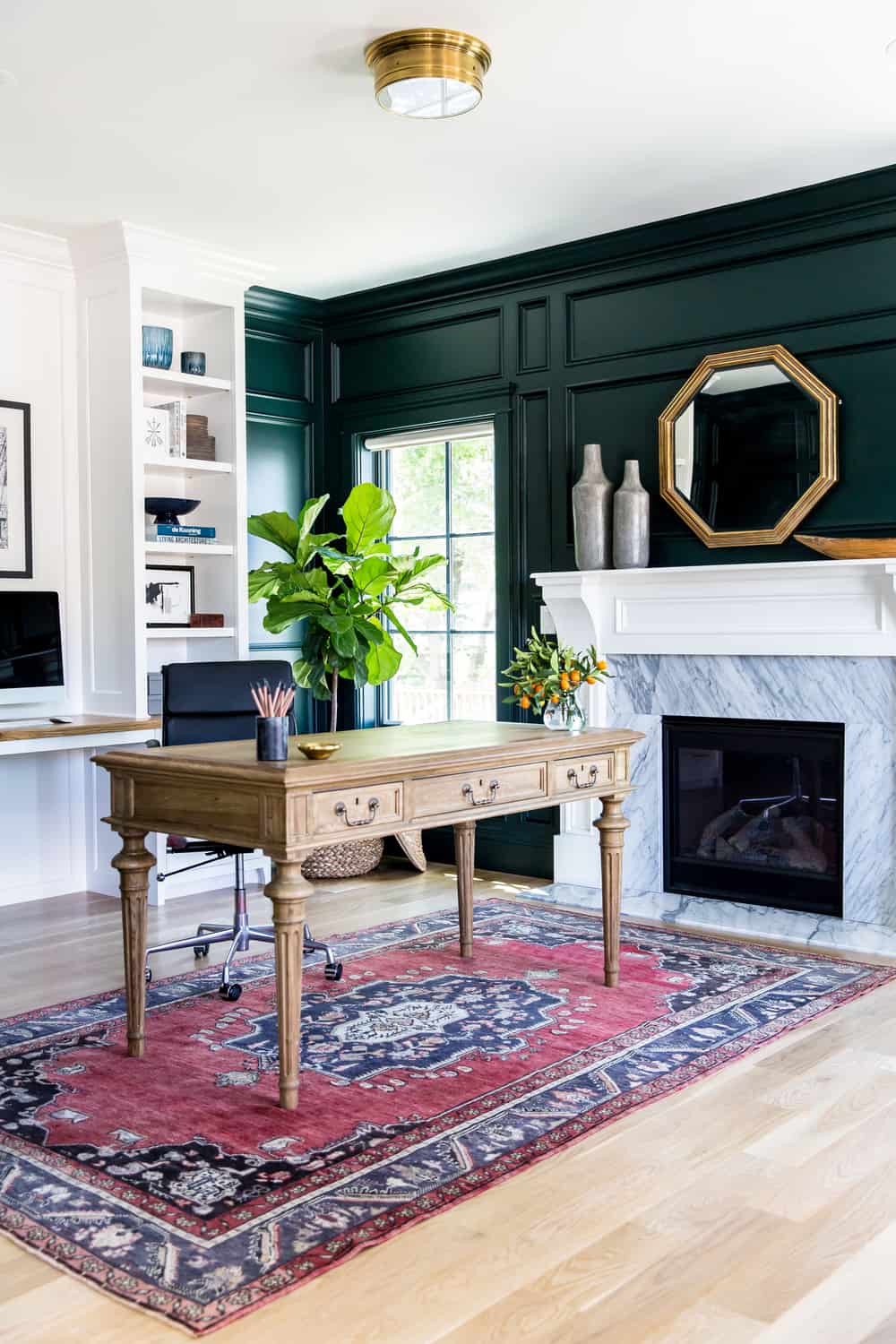
I’ve been crushing on Shea from Studio McGee lately. She’s an interior designer with no formal training who is killing it in the design world right now. This is from her Claybourne Project. I love everything about this room, especially the fiddle leaf in the corner.
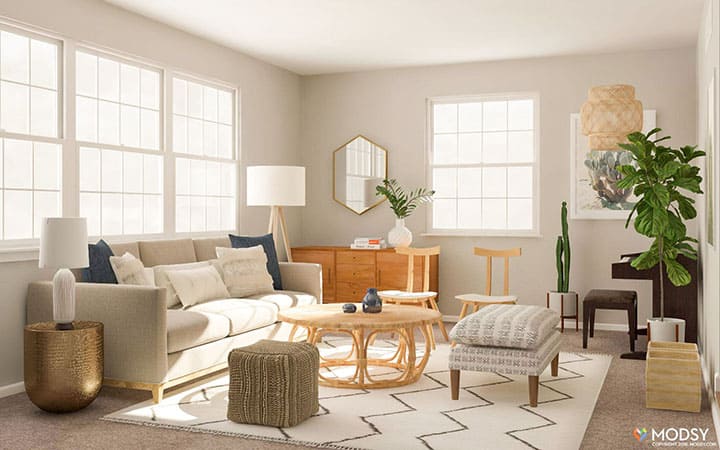
I like this particular example from Alice and Lois because I think the fiddle leaf tree makes a dramatic difference in this space. Take that tree away and even with the other plants in the room, I feel like it would be lacking something. The tree totally makes a difference.
Now, I’ve been on the hunt for the perfect faux fiddle leaf tree and finally found one for only $49.99 that you can order online! It’s currently in our hallway and it’s the perfect piece for the space.
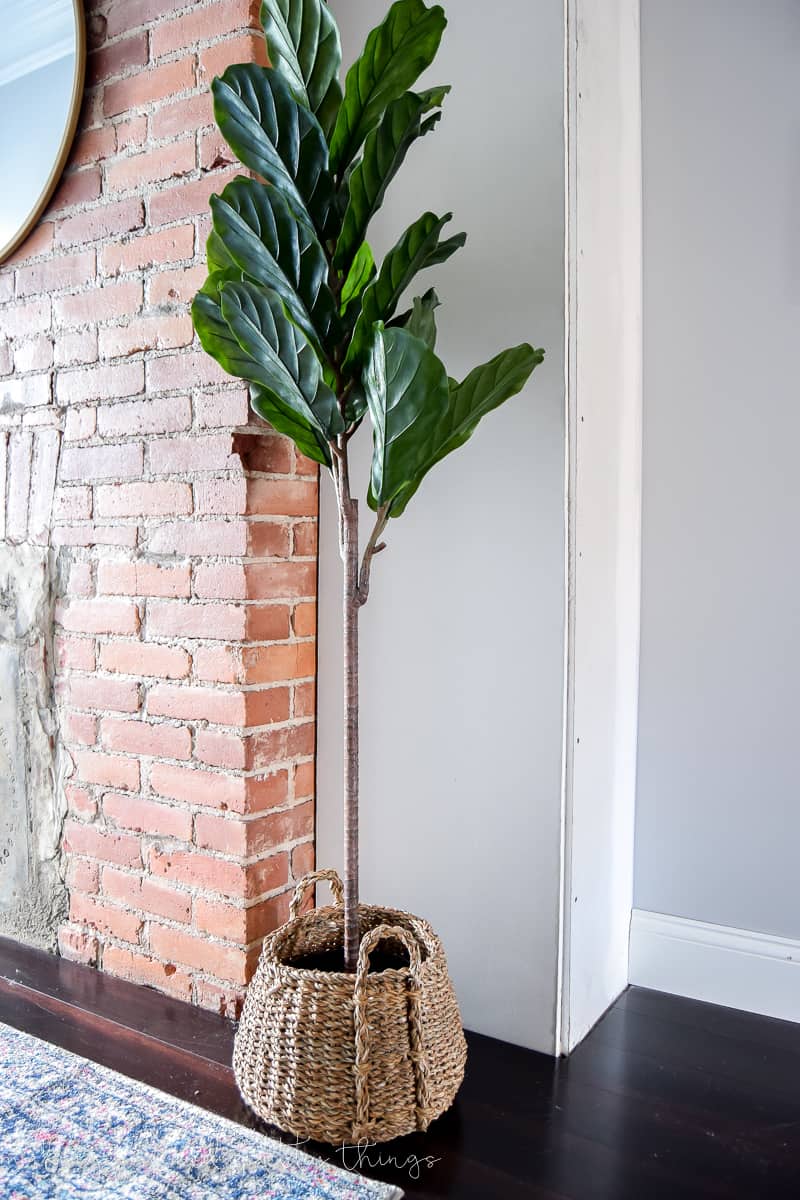
Head over to Making it in the Mountains to see where to get it!
Snake Plant
My second favorite houseplant is the snake plant. I actually have two real snake plants that are not only still alive but growing!
While a real snake plant would be a great start houseplant, I can still understand the desire to go faux.
Let’s look at some snake plants in pretty spaces!
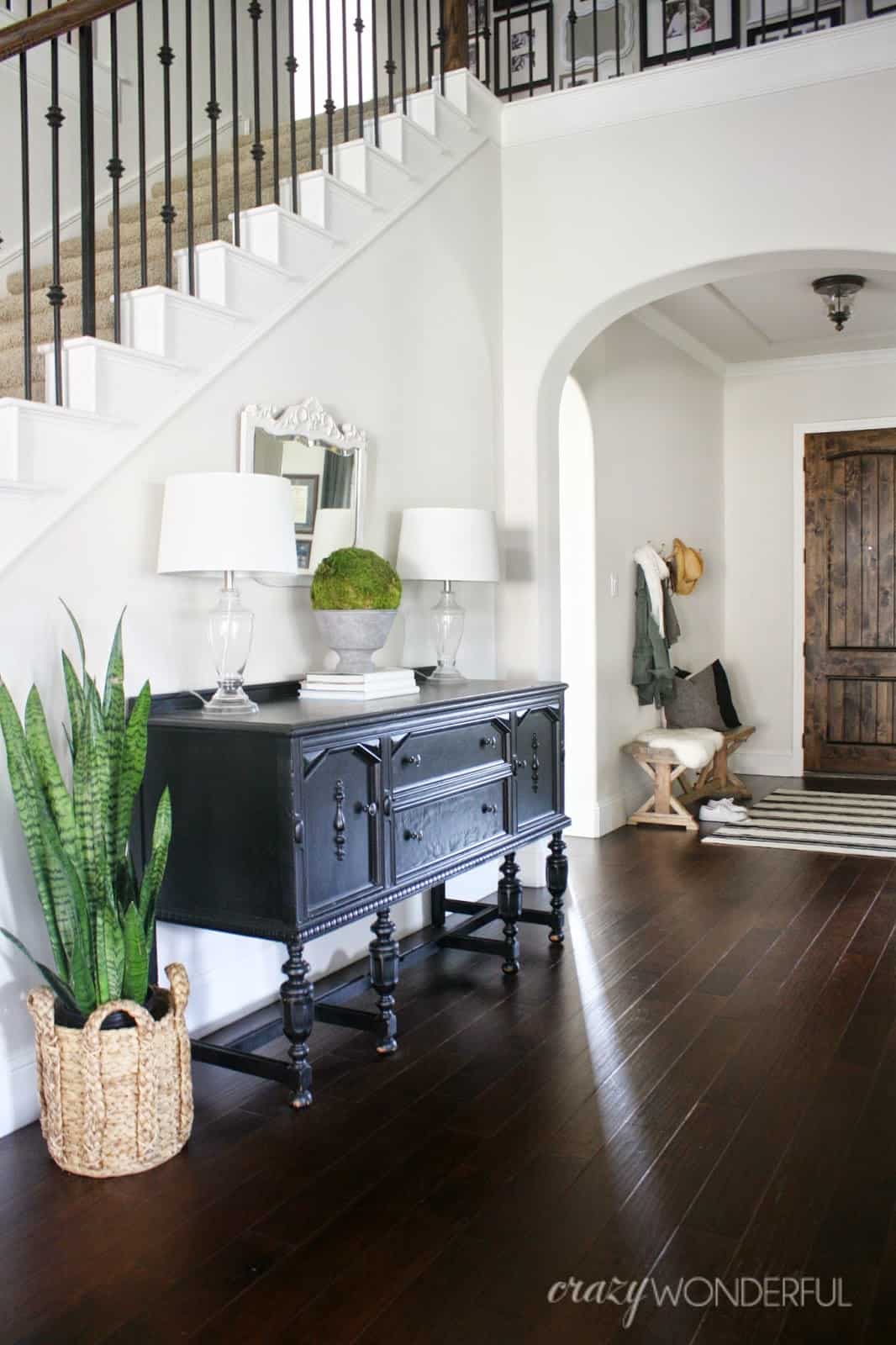
This entryway from Crazy Wonderful is beautiful. Don’t you just love the snake plant?!
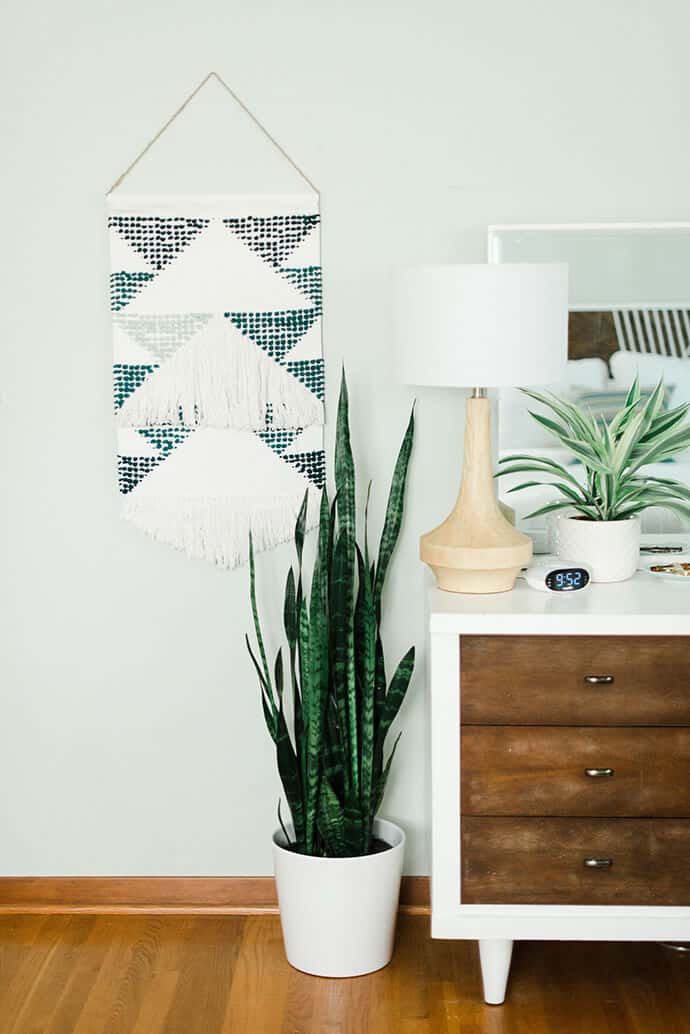
Carrie Waller from Dream Green DIY uses this gorgeous snake plant in her home and I can’t help but be jealous!
Like the fiddle leaf tree from above, I had been searching for a faux snake plant for those areas of my home that don’t get a lot of light. I found the perfect one that’s currently in Evie’s nursery (though that’s not its permanent home).
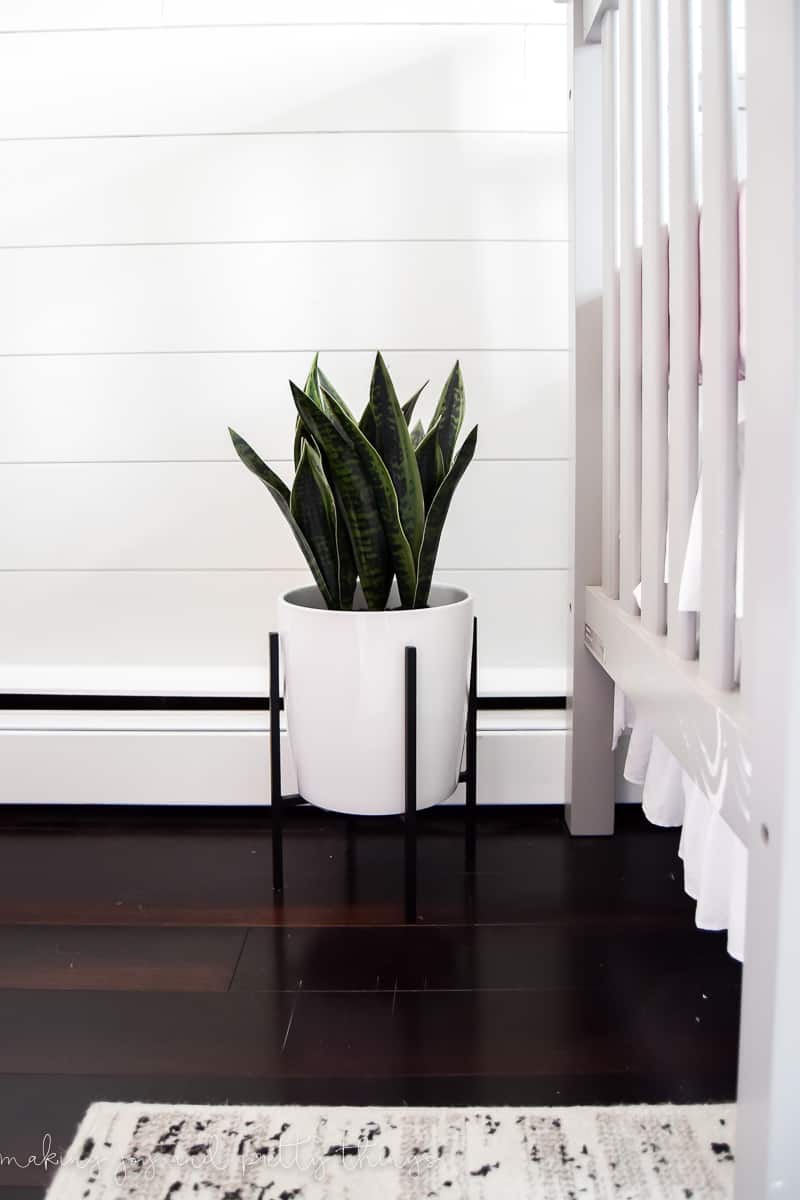
Hop over to Making it in the Mountains to see where you can get the faux snake plant for $39.99!
Decorating with fake plants is an effective and easy way to breathe life into any space, without the hassle of real flowers, real dirt, and fussing with natural elements. By choosing quality faux foliage and getting creative with placement, you can create a lush and inviting environment that requires minimal maintenance.
